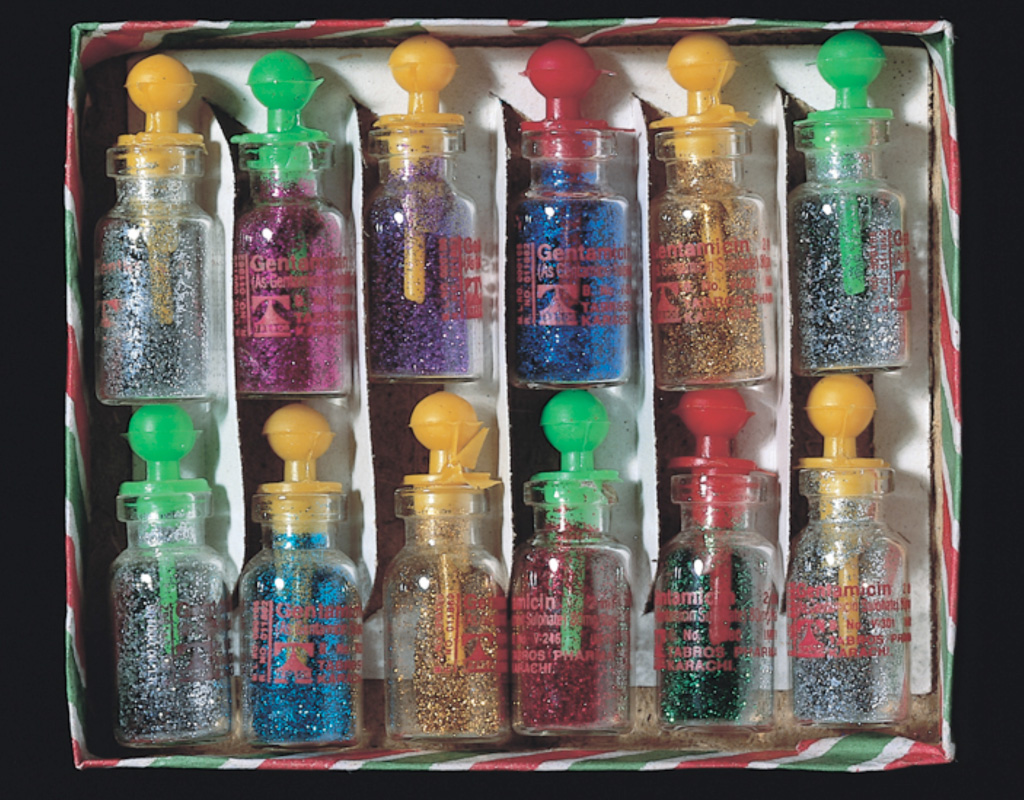Cosmetics
It is often women who are judged more on their appearance than men and so most cosmetics tend to be worn by women. However, for the Wodaabe, a Fulani nomadic tribe of Niger, the end of the rainy season brings the gerewol, a week-long 'beauty festival' in which young men adorn themselves in make-up and headdresses, and perform songs and dances to be judged and chosen by women. Among the Nuba of Sudan men may take hours to painstakingly paint their faces in bright, mask-like patterns as declaration of identity. In all cases, nonetheless, the presence, style or absence of make-up serves as one of the main identifiers between the sexes.It is often women who are judged more on their appearance and so most cosmetics tend to be worn by women. However, for the Wodaabe, the end of the rainy season brings a week-long 'beauty festival' in which young men adorn themselves in make-up and headdresses, and perform songs and dances to be judged by women.
In many cultures, lighter skin is associated with the upper classes (to suggest that they have no need to toil in the sun) and so white face powder is found among many stratified societies in history. The ancient Egyptians, Romans and Greeks used lead- or mercury-based foundations, often suffering from their poisonous effects; Japanese geishas use heavy white powder on their faces as a sign of beauty and social status; and medieval Europeans used arsenic on their skin, even painting blue lines on the forehead to imitate a translucency that revealed the veins. Foundations and face powder remain the mainstays of cosmetics today, often composed of ingredients such as talc, kaolin, and magnesium although plant ingredients are also used such as the stearic acid found in cocoa butter or, as in Southeast Asia, the ground-up bark of the mulberry tree. Alternatively in southern and western Africa in particular, dry (therefore pale-looking) skin is considered unhealthy-looking so oils and fats are regularly smeared into the skin to keep it looking glossy, soft and attractive.
 Bottles of eye glitter from Pakistan (1990s)Although skin is the primary focus for cosmetics, products are also used on the hair, eyelashes, eyebrows, lips, nails and teeth. In Arab north Africa women would emphasise their eyebrows by painting them over with a thick, dark line that crossed their forehead, whilst in continental Europe in the later 18th century, the fashion for high-browed wigs resulted in women shaving off their natural eyebrows and sticking on fake mouse-skin versions further up on their forehead. White teeth have become the ideal for many, but in other places in Polynesia and Asia, black teeth are considered more attractive. Rosy cheeks and lips are associated with vitality, youth and sexual arousal and so are often painted in red hues sourced from red ochre, plants or cochineal. In the Western world, cosmetics veered in and out of social acceptability. In ancient Rome, women wore blusher but it was not always well received. The Roman poet Propertius wrote:
Bottles of eye glitter from Pakistan (1990s)Although skin is the primary focus for cosmetics, products are also used on the hair, eyelashes, eyebrows, lips, nails and teeth. In Arab north Africa women would emphasise their eyebrows by painting them over with a thick, dark line that crossed their forehead, whilst in continental Europe in the later 18th century, the fashion for high-browed wigs resulted in women shaving off their natural eyebrows and sticking on fake mouse-skin versions further up on their forehead. White teeth have become the ideal for many, but in other places in Polynesia and Asia, black teeth are considered more attractive. Rosy cheeks and lips are associated with vitality, youth and sexual arousal and so are often painted in red hues sourced from red ochre, plants or cochineal. In the Western world, cosmetics veered in and out of social acceptability. In ancient Rome, women wore blusher but it was not always well received. The Roman poet Propertius wrote:
Even now, mad girl, dost ape the painted Briton and wanton with foreign dyes upon thy cheek? Beauty is ever best as nature made it; foul shows the Belgian rouge on Roman cheeks.
Carmina II 18B, 1–4 (c. 25 BC)
One 19th-century beauty manual advocated a more permissive attitude towards make-up than would be the norm in later Victorian times:
Ought people to use paint? Why not? When a person is young, and fresh, and handsome, to paint would be perfectly ridiculous; it would be wantonly spoiling the fairest gifts of nature. But, on the contrary, when an antique and venerable dowager covers her brown and shrivelled skin with a layer of white paint, heightened with a tint of vermilion, we are sincerely thankful to her; for then we can look at her at least without disgust.
The Art of Beauty; or the Best Methods of Improving and Preserving the Shape, Carriage and Complexion (1825)
Today, the British cosmetics industry is worth in excess of £1 billion a year. An average British woman will spend £9000 in her life-time on beauty products and 40% of British women would not consider leaving the house without make-up on (surveys by Mintel 2007 and Superdrug 2010). In a modern society, where cosmetics are used by young and old alike, statistics such as this might suggest that cosmetics are less about self-expression and more about vanity and conformity.
Further information is available in the Museum's Introductory Guide, which is available here.
